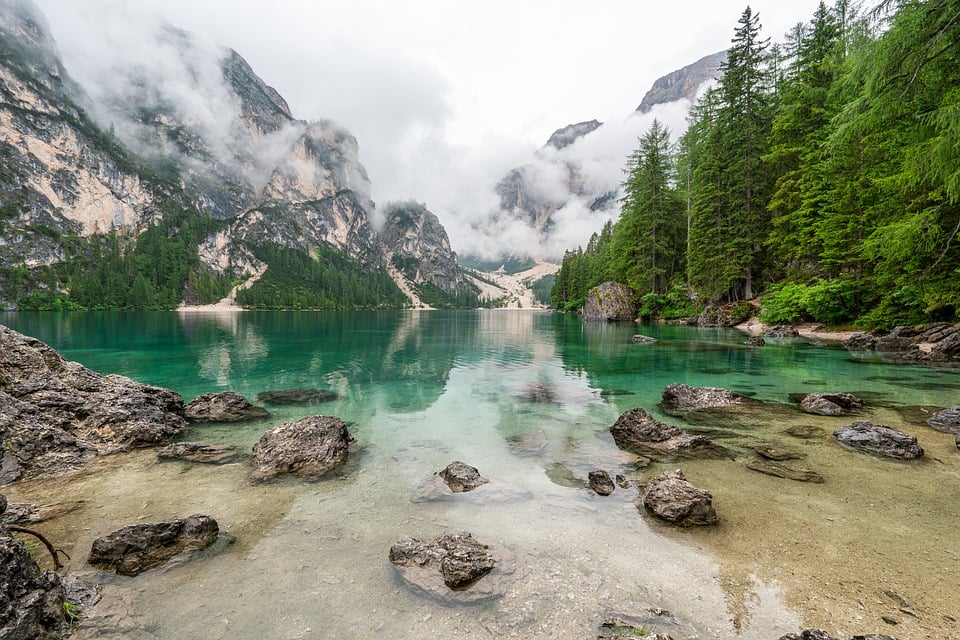Title: Nature’s Wonders: Mind-Blowing Facts About the Amazon Rainforest
Introduction:
The Amazon Rainforest is a true marvel of nature, home to a rich diversity of flora and fauna, countless ecosystems, and some unique phenomena. Spanning nine countries, this vast expanse of green is the largest tropical rainforest on Earth. In this article, we will uncover some mind-blowing facts about one of the most breathtaking natural wonders of our planet.
1. The Amazon holds one-tenth of all the world’s known species
This incredible ecosystem is home to around 390 billion individual trees from 16,000 species, and untold numbers of insects, birds, reptiles, and mammals. This means that one in ten species on Earth can be found in the Amazon Rainforest!
2. The Amazon River is the largest river in the world
The Amazon River boasts the largest drainage basin in the world and it is also the largest, longest river in the world by volume. It carries more water than the next seven largest rivers combined, discharging about 20% of all the fresh water that flows into the oceans worldwide.
3. Trees “communicate” through a network called the “Wood Wide Web”
Forests in the Amazon are interconnected through a vast underground network, called the “Wood Wide Web,” created by fungi. Trees communicate via chemical signals in this mycorrhizal network, warning each other about drought, disease, and insect attacks while sharing nutrients and water.
4. The Amazon Rainforest produces 20% of the world’s oxygen
It has often been stated in popular culture that the Amazon produces 20% of the world’s oxygen; however, this is a common misconception. In reality, the amount of oxygen produced in the Amazon through photosynthesis is largely consumed by respiration from the very organisms that live in it. Nevertheless, the Amazon still plays a vital role in balancing the world’s oxygen and carbon cycles.
5. The Amazon is the world’s “Lungs of the planet”
Although the Amazon is not a primary source of the Earth’s oxygen, the rainforest is integral in keeping global air clean by absorbing carbon dioxide and producing oxygen as a byproduct of photosynthesis. It acts as a filter for greenhouse gases, playing a significant role in regulating the Earth’s climate.
6. Approximately 40,000 different plant species can be found in the Amazon Rainforest
This diverse ecosystem is home to thousands of species of plants, exhibiting a wide array of colors, shapes, and sizes. Some of the unique flora includes the giant water lilies that can grow up to 10 feet in diameter, Orchids which are abundant and have over 2,500 species in the Amazon alone, and the Brazil nut tree which produces fruit that can grow as large as basketballs.
7. The Amazon Rainforest is continually in danger of deforestation
Due to human activities such as agriculture, mining, and logging, large swathes of the Amazon Rainforest are constantly at the risk of deforestation. This further threatens the region’s immense biodiversity and disrupts the balance of its significant ecological contributions.
Image: A satellite view of the Amazon Rainforest, encompassing the diverse array of lush green, pulsing through the heart of South America.
FAQ’s Section
Q1. What countries does the Amazon Rainforest span across?
A1. The Amazon Rainforest spans through nine countries – Brazil, Peru, Bolivia, Colombia, Ecuador, Venezuela, Guyana, Suriname, and French Guiana.
Q2. How big is the Amazon River?
A2. The Amazon River, which flows through the heart of the Amazon rainforest, is considered to be the largest river by discharge volume in the world, with an average discharge of 209,000 cubic meters per second.
Q3. Are the Amazon Rainforest’s trees able to ‘communicate’?
A3. Yes, trees in the Amazon Rainforest have a special kind of underground network which helps in the transfer of nutrients, water, and crucial chemical signals between them. These connections form what is often referred to as the “Wood Wide Web”.
Q4. How is the Amazon Rainforest important for the Earth?
A4. The Amazon Rainforest plays an essential role in maintaining our planet’s health. It is a vital carbon sink, absorbs carbon dioxide, and produces oxygen through photosynthesis. Additionally, it is home to countless species and maintains the balance of global ecosystems.
Q5. What are the primary threats facing the Amazon Rainforest today?
A5. The Amazon Rainforest is primarily threatened by deforestation due to agricultural expansion, illegal logging, mining operations, and climate change. These activities not only destroy the unique ecosystem but hasten climate change by releasing stored carbon.
Conclusion:
The Amazon Rainforest remains one of the Earth’s most complex and naturally stunning ecosystems. Its rich biodiversity, interconnected systems, and significant ecological contributions are truly astounding. However, it is important that we remain respectful, responsible, and environmentally conscious to ensure the survival and sustainability of this magnificent land for centuries to come. By understanding the wondrous intricate nature of the Amazon rainforest, together, we can take significant and meaningful steps towards its preservation and protection.



